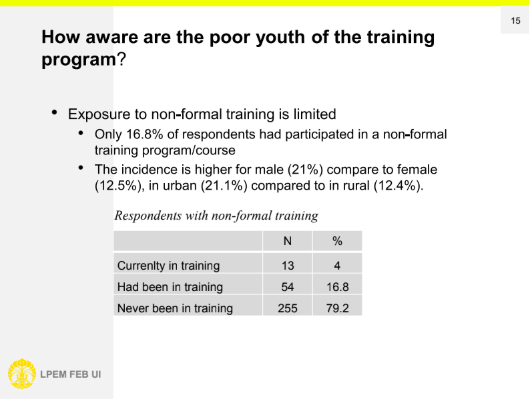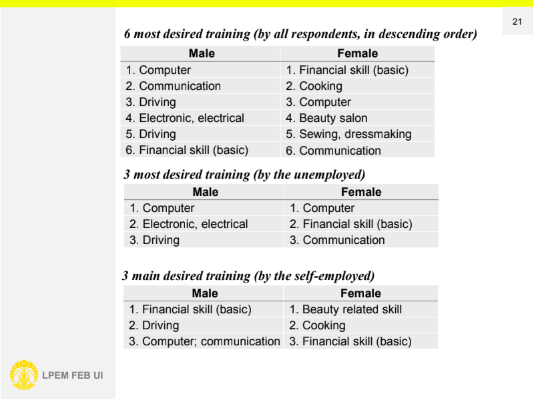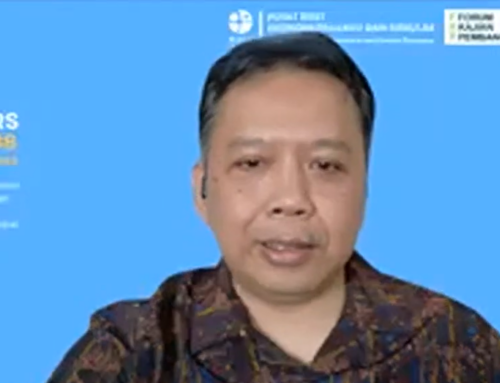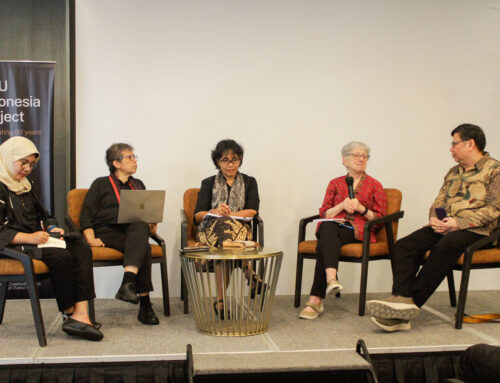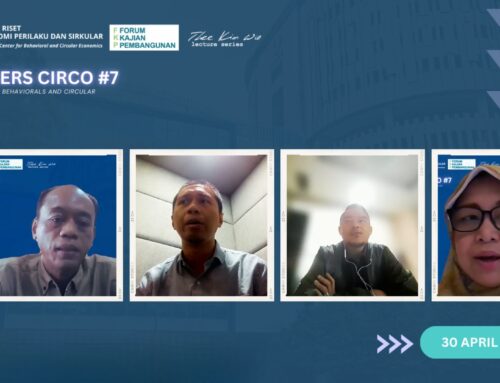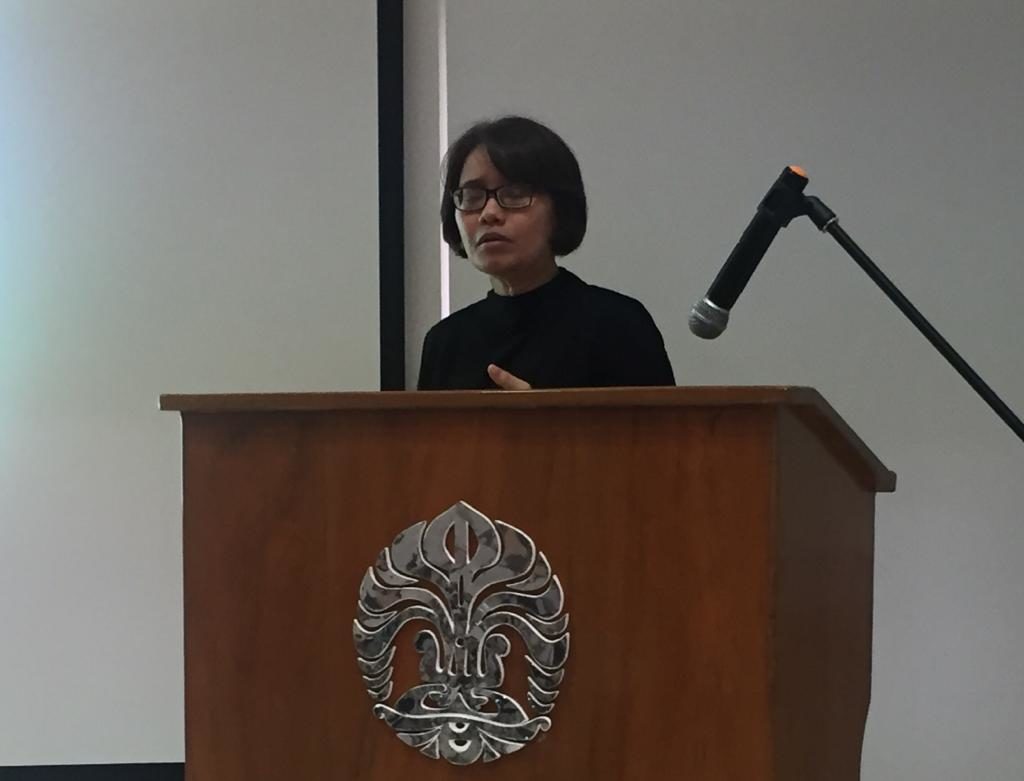 Indonesia’s upcoming demographic dividend, which refers to the change in the age structure of a country’s population that is characterized by the bigger share of the working-age population than that of the non-working age counterparts, opens the window of opportunity to increase the nation’s per capita income and savings, which will support growth and development. However, this can only be achieved if the youth are productive and earn satisfactory income. Without these two conditions, the demographic dividend may turn into a vicious cycle of intergenerational poverty. Trainings are believed to be a remedy for this problem, yet access to training is often limited. On Wednesday, 29 May 2019 Arie Damayanti (LPEM FEB UI) presented a study conducted by LPEM FEB UI for USAID regarding the barriers to access training faced by poor and vulnerable youths.
Indonesia’s upcoming demographic dividend, which refers to the change in the age structure of a country’s population that is characterized by the bigger share of the working-age population than that of the non-working age counterparts, opens the window of opportunity to increase the nation’s per capita income and savings, which will support growth and development. However, this can only be achieved if the youth are productive and earn satisfactory income. Without these two conditions, the demographic dividend may turn into a vicious cycle of intergenerational poverty. Trainings are believed to be a remedy for this problem, yet access to training is often limited. On Wednesday, 29 May 2019 Arie Damayanti (LPEM FEB UI) presented a study conducted by LPEM FEB UI for USAID regarding the barriers to access training faced by poor and vulnerable youths.
To get a better understanding of the vulnerable group, this study investigated whether poor and vulnerable youths are aware of available training programs, the kinds of skills they want, as well as the constraints they encounter in accessing and completing the training programs. To answer this question, LPEM and USAID conducted surveys in 12 municipalities in West Java and South Sulawesi in 2013, which target poor and vulnerable youth aged 18 to 34 years old who live under USD 2 per day. Due to the nonrandom sampling method, Arie noted that the result of this survey is not to be generalized to the general population.
The study found that of all the respondents surveyed only 16.8% had participated in a job training program. The incidence is also higher for male than for female respondents, and for those who live in urban rather than rural areas. One of the reasons of the low participation rate is limited information. Many of the respondents claimed that they rely mainly on information from friends, family, and teachers, while conventional media plays a limited role in circulating information about the programs.
When it comes to the desired skills, this study found that the answers of male and female respondents differ. Male respondents are more interested in communication skills, driving, and technical electronic skills. On the other hand, women are more interested in learning financial skills, cooking, and beauty-related skills. Computer skills appear in the answers of both genders. In addition, basic financial skills are highly demanded, especially by self-employed respondents.
Some obstacles hinder respondents from participating in training programs. Training fee is the main factor that discourages participation. Aside from that, household and child care duties disproportionately affect women in participating in these programs. Furthermore, even when respondents have participated in a program, completion is often a different problem. Due to financial constraints, respondents find it difficult to commit their time for finishing the program. To address the financial issues, Arie suggested several solutions, such as giving subsidies and shifting to technical/specialized trainings, which are found to be cheaper than general training programs. To increase accessibility, there needs to be regional/local training centers and more utilization of the internet to spread information. Courses should also be shorter, so that participants do not have to take an extended leave of absence from their job.
For the complete presentation and Q&A session, please refer to the video and materials provided.
